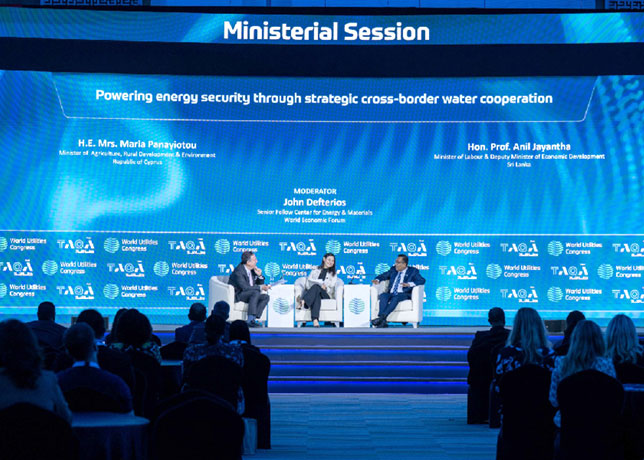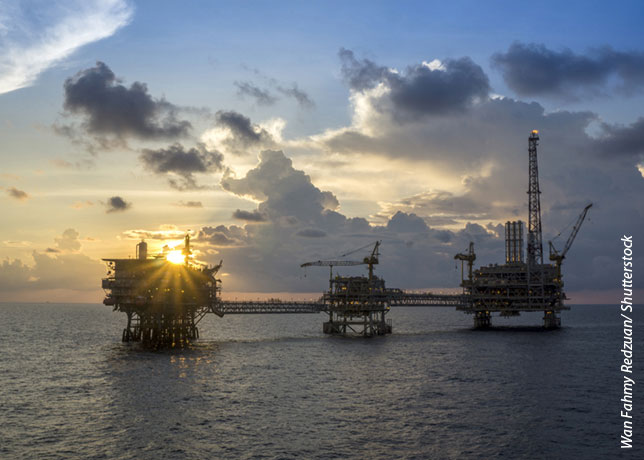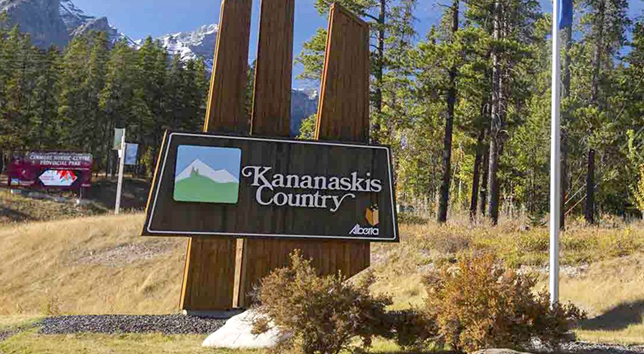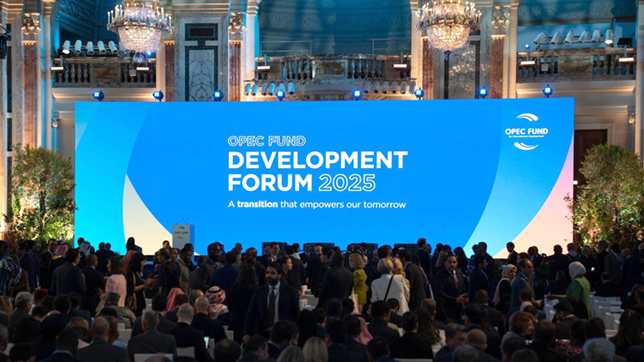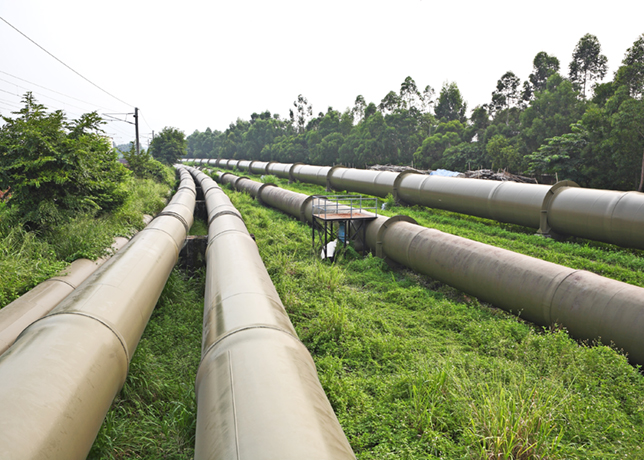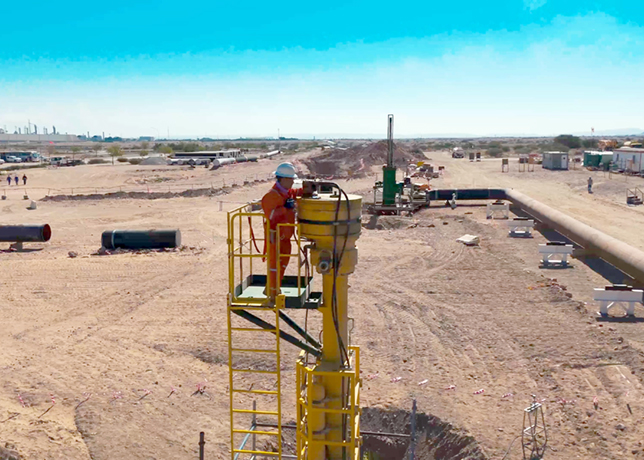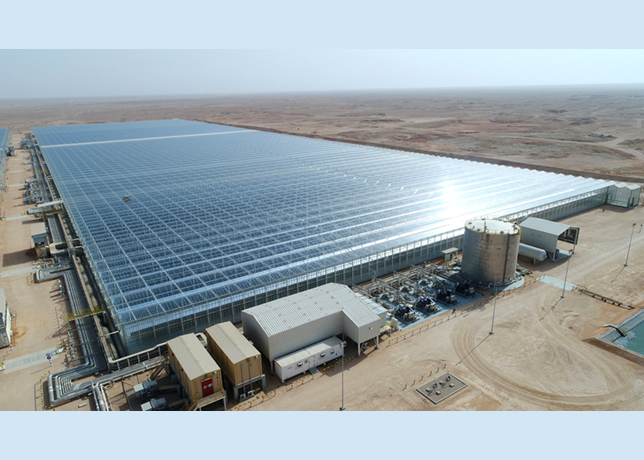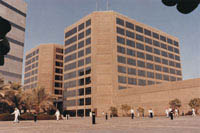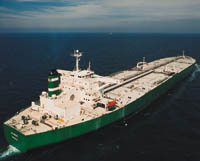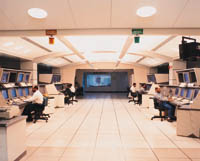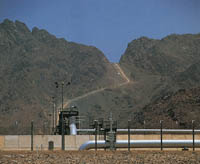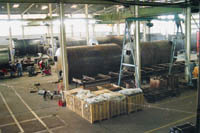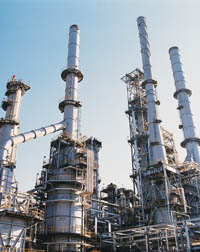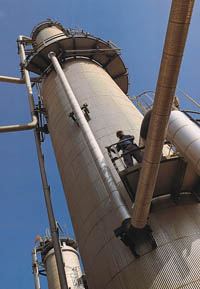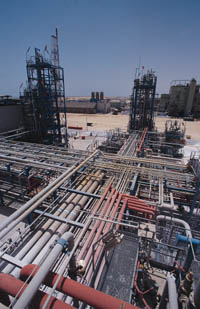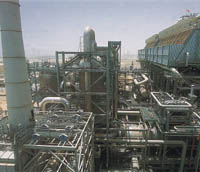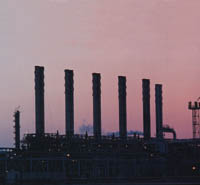
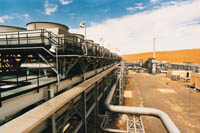 The Master Plan covers Saudi AramcoÕs broad scope of activities
The Master Plan covers Saudi AramcoÕs broad scope of activities
The world's largest producing oil company has a sizeable task on its hands making sure that industrial wastes associated with its operations are handled properly so as not to harm the environment.
When the company's own internal environmental audits revealed difficulties on the part of contractors in achieving adequate waste disposal, Saudi Aramco tackled the problem head on.
The dimensions of the challenge were daunting: more than 60 hydrocarbon plants are involved, including refineries and gas plants, a Kingdom-wide petroleum products distribution network, and two of the world's largest oil storage and shipping terminals. Through one of these plants alone (Abqaiq) more oil passes every day than is produced daily in the US.
Also, the geographical area covered by these operations is vast - the distance between the two plants furthest apart is more than 2,000 km. And much of the territory is characterised by a harsh climate and difficult terrain features.
The traditional industry approach, which calls for each plant to provide for its own waste disposal needs out of its own particular budget, was transposed by a multi-disciplinary team effort from the company's Engineering Services organisation and a comprehensive new planning initiative - the Master Plan for Industrial Waste Management.
Through a year-long investigation, the team defined the particular waste management needs of each plant and determined what facilities were available to properly manage those wastes. The wastes generated by each plant were defined, for the most part, as oily wastes, leaded sludge or potentially hazardous waste material.
Then, dividing the country into three regions, the team investigated what cost-effective solutions for the management of these wastes were available to each region. The Master Plan identified a need for these treatment and disposal units: oily waste landfarms, leaded sludge treatment and disposal areas, and storage and consolidation areas for potentially hazardous waste materials.
The plan also identified a need for an incineration capacity on a national basis to handle potentially hazardous waste materials. Field surveys were employed to determine the availability and suitability of land sites, access and utilities for the proposed regional facilities.
A key factor in the success of the Master Plan was the formation of regional committees to represent the plants in each region. Decision-makers from each plant met as a committee over a two-year period to review and approve plan proposals and to designate a sponsor for each regional project.
The achievements of these committee were remarkable in view of the challenges posed by the sheer size of the geographical areas involved, the availability of land and infrastructure to support the projects, and overlapping jurisdictions.
With a strong belief in benefits of synergy with the private sector, Saudi Aramco went public with its plans as soon as they had passed through the engineering design to the funding stage. With something real and concrete to talk about, the company encouraged the private sector to invest in waste management facilities. Such investments would have the desired effect of reducing the company's direct outlay of capital to build and operate these facilities and, at the same time, create an excellent opportunity for private investment.
Potential investors were provided with detailed information as developed by the Master Plan, including the types and quantities of waste materials generated, locations, identification of needs, as well as useful conceptual designs. Testimonials from those who received these information packages attest to the significant influence which the Master Plan extorted on their ultimate decisions to proceed with establishing industrial waste management facilities in Saudi Arabia.
The influence of Saudi Aramco's approach to this common industrial challenge, from conceptual thinking to detailed planning, gave birth to an important new area of industrial activity in the Kingdom. The regional approach favored by the Master Plan appealed to investors because of its cost-effectiveness; the development of the plan itself served as a potent catalyst for investors to seek opportunities identified by this important new initiative.










